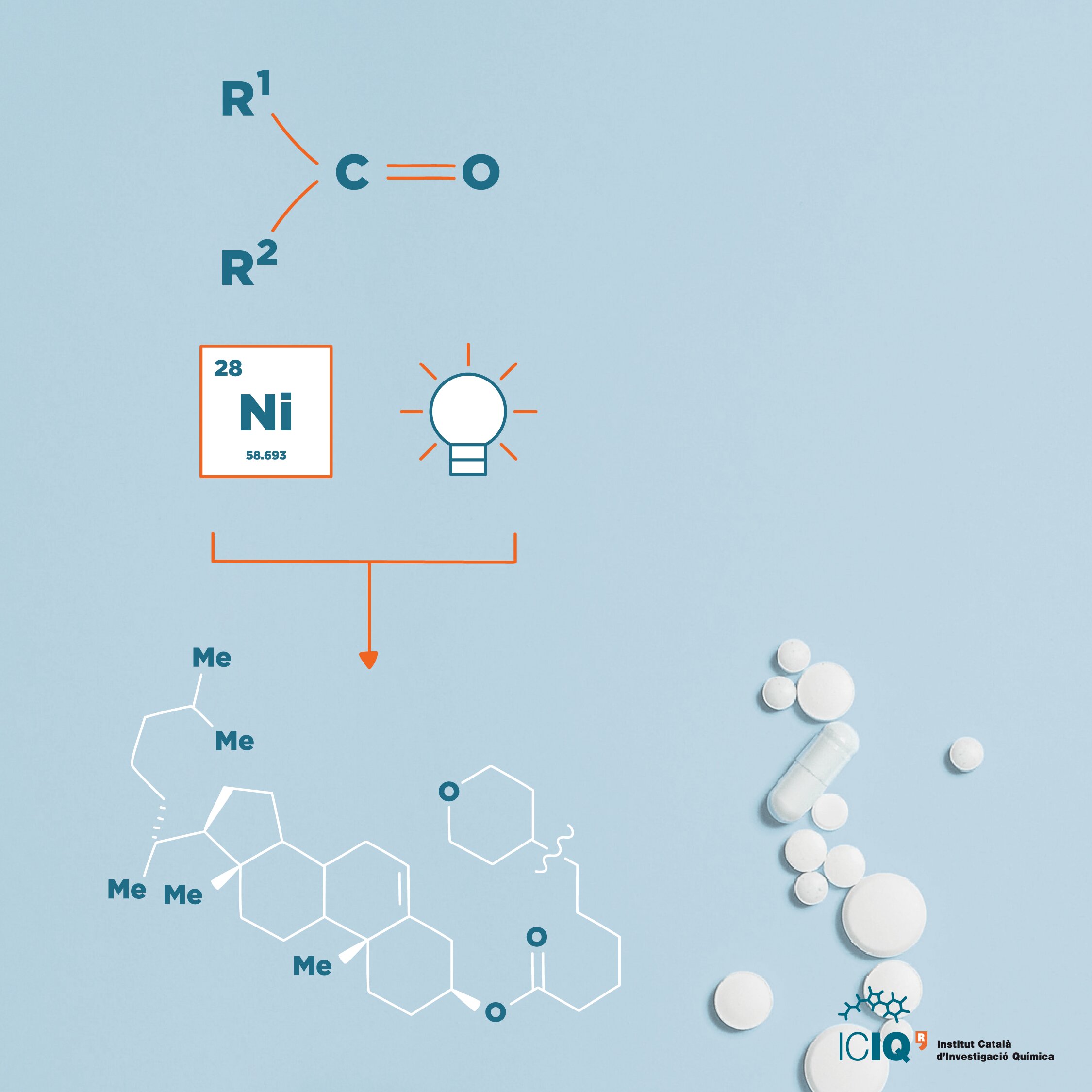

Researchers have published a paper describing, for the first time, the use of ketones as alkyl cross-coupling synthons.
For Xin-Yang Lv and Dr. Roman Abrams, researchers in Prof. Martin’s group at the Institute for Chemical Research of Catalonia (ICIQ), keeping up with scientific literature is a source of inspiration for the development of new synthetic methodologies. Taking a recent publication one step further, the scientists in Prof. Martín’s group have devised a new strategy that facilitates the creation of organic molecules of pharmacological interest. The method has been published in the open-access journal Nature Communications.
The strategy developed by the Martin group makes ketones available to chemists to be used as alkyl cross-coupling synthons. “This method provides an enormous flexibility to chemists and pharmacists in the synthesis of organic molecules, by moving beyond the classical reactivity of ketones and towards the use of this abundant class of compound as cross-coupling partners,” explains Prof. Ruben Martin, leader of a research group at ICIQ and ICREA professor.
The originality of the work lies in the use of ketone derived dihydroquinazolines as radical precursors. The researchers have used a dual catalytic approach, using nickel and a photoredox catalyst to generate and trap radical intermediates for the ensuing cross-coupling, forming a new C-C bond in a selective and controlled manner.
Being able to use widely abundant and easily preparable ketones as cross-coupling handles, together with the mild reaction conditions, is key to the potential widespread use of this new strategy. The authors provide examples of the use of this methodology in the presence of other synthetic handles in the paper.
“The method stands out for its great scope and wide application for the synthesis of organic molecules. It is a new approach for the construction of architectures of great interest for medicinal and pharmaceutical chemistry,” says Prof. Martin.
Understanding catalytic couplings: not all synergies are simple
Xin-Yang Lv et al, Dihydroquinazolinones as adaptative C(sp3) handles in arylations and alkylations via dual catalytic C–C bond-functionalization, Nature Communications (2022). DOI: 10.1038/s41467-022-29984-0
Institute of Chemical Research of Catalonia
Citation:
Cross-coupling ketones: Adding flexibility to the synthetic chemistry toolbox (2022, May 30)
retrieved 30 May 2022
from https://phys.org/news/2022-05-cross-coupling-ketones-adding-flexibility-synthetic.html
This document is subject to copyright. Apart from any fair dealing for the purpose of private study or research, no
part may be reproduced without the written permission. The content is provided for information purposes only.